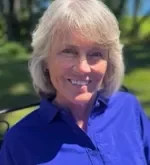
Julie has enjoyed being a physical therapist, with more than 40 years of her career dedicated to the management of the upper limb and hand. Practice sites have varied from the Midwest and to the west to east coasts in acute hospitals, an adult burn center, as owner of a private hand therapy practice, development of two corporate hand centers and as a private consultant. She has had the great fortune to work side by side with hand surgeons and therapists who have influenced her approach to patient care as well as the science of hand surgery and hand therapy.
Julie has strived to be a lifetime learner, provide valued patient care, and to be a good mentor and colleague. Early in her career, she set a personal goal to routinely contribute to the science of hand therapy. She now has over 20 peer-reviewed publications and 15 book chapters and articles.
Julie has participated in countless professional seminars and is proud of her service to AAHS, ASHT, IFSHT, Journal of Hand Therapy, Hand, and Techniques in Hand and Upper Extremity Surgery. She has been honored to receive the AAHS Vargas Teaching Award, ASHT RL Petzoldt Award for best innovative research, ASHT Best Clinical Research paper, the Journal of Physical Therapy Jack Walker Award for best clinical practice manuscript and most downloaded IFSHT presentation. She has had the great honor to be awarded Philadelphia’s Honored Professorship and Invited Speaker for the New Zealand, Dutch, Canadian and Malaysian Hand Therapy Societies. Co-editing the 2023 Journal of Hand Therapy relative motion special issue was also a very satisfying achievement for Julie!
Julie feels very fortune to have collaborated with many colleagues over the years, especially Wyndell Merritt, MD, FACS and Melissa Hirth, BOT, MSc, PhD. Together they have made an evidence-based global impact concerning the relative motion concept and orthoses.
On this episode we are joined by Julianne Howell, a physical therapist and certified hand therapist who has contributed significantly to the field of hand and upper extremity therapy through publications and teaching of the use of relative motion orthoses. We discuss the concept of relative motion and how this was initially used in treating extensor tendon repairs but now is being utilized for protection, assessment, exercise, and adaptive techniques. We also explore a variety of diagnoses and instances where patients might benefit from a relative motion extension or flexion orthosis.




